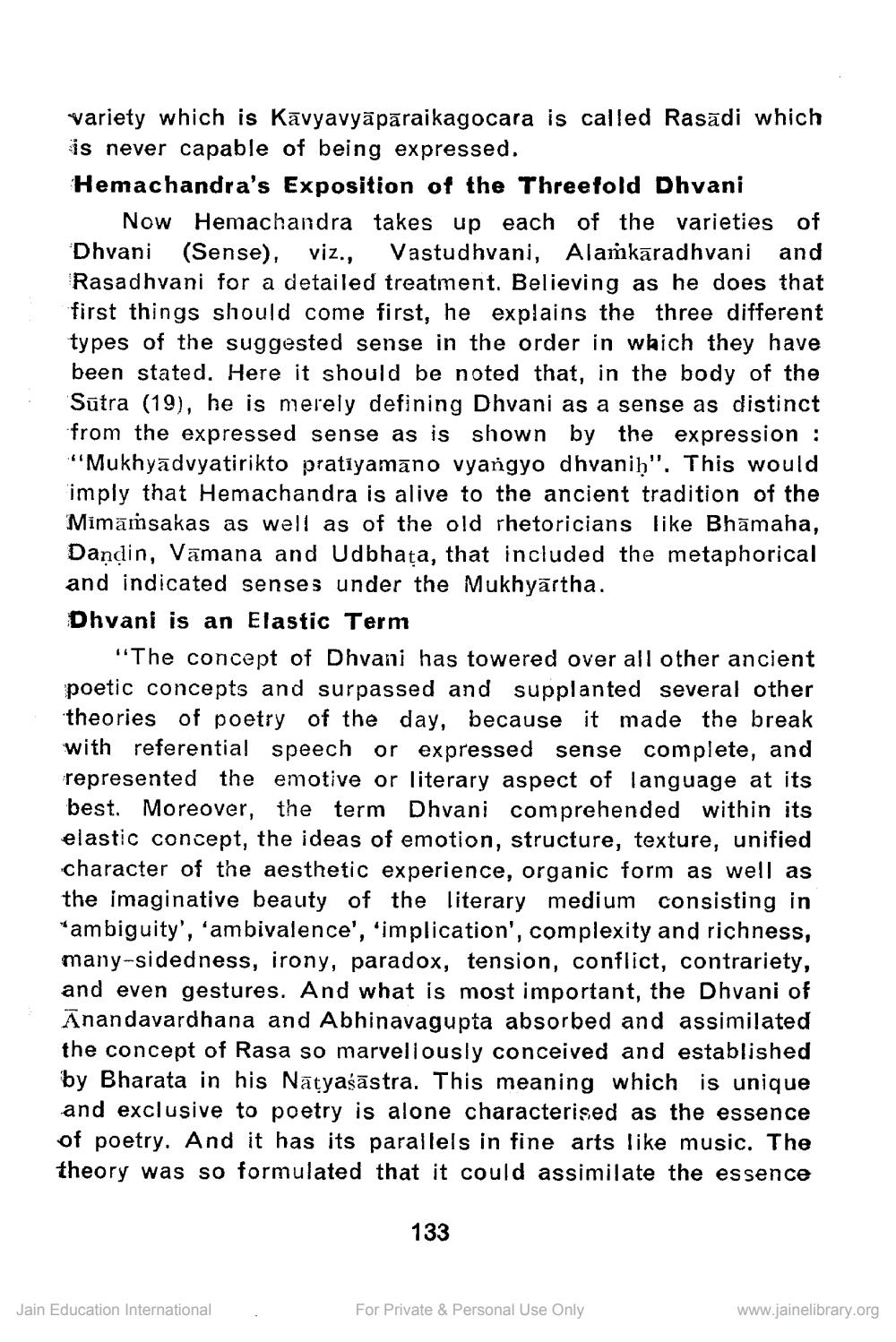________________
variety which is Kāvyavyāpāraikagocara is called Rasadi which is never capable of being expressed.
Hemachandra's Exposition of the Threefold Dhvani
Now Hemachandra takes up each of the varieties of Dhvani (Sense), viz., Vastudhvani, Alamkaradhvani and Rasadhvani for a detailed treatment. Believing as he does that first things should come first, he explains the three different types of the suggested sense in the order in which they have been stated. Here it should be noted that, in the body of the Sūtra (19), he is merely defining Dhvani as sense as distinct from the expressed sense as is shown by the expression : "Mukhyādvyatirikto pratiyamano vyangyo dhvaniḥ". This would imply that Hemachandra is alive to the ancient tradition of the Mimāmsakas as well as of the old rhetoricians like Bhāmaha, Daṇḍin, Vamana and Udbhata, that included the metaphorical and indicated senses under the Mukhyārtha.
Dhvani is an Elastic Term
"The concept of Dhvani has towered over all other ancient poetic concepts and surpassed and supplanted several other theories of poetry of the day, because it made the break with referential speech or expressed sense complete, and represented the emotive or literary aspect of language at its best. Moreover, the term Dhvani comprehended within its elastic concept, the ideas of emotion, structure, texture, unified character of the aesthetic experience, organic form as well as the imaginative beauty of the literary medium consisting in *ambiguity', 'ambivalence', 'implication', complexity and richness, many-sidedness, irony, paradox, tension, conflict, contrariety, and even gestures. And what is most important, the Dhvani of Anandavardhana and Abhinavagupta absorbed and assimilated the concept of Rasa so marvellously conceived and established by Bharata in his Natyasastra. This meaning which is unique and exclusive to poetry is alone characterised as the essence of poetry. And it has its parallels in fine arts like music. The theory was so formulated that it could assimilate the essence
Jain Education International
133
For Private & Personal Use Only
www.jainelibrary.org




